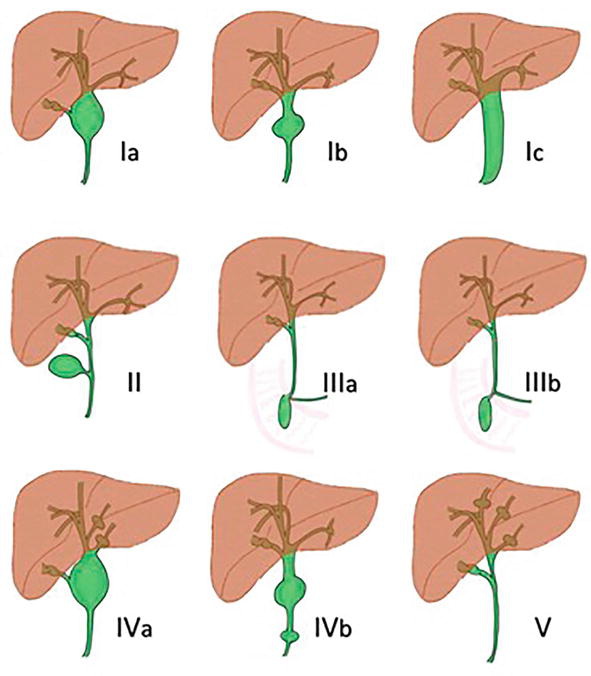Choledochal Cyst : Todani Classification


Comments:
Todani Classification of Choledochal Cysts: Based on the location of the dilation within the biliary tract, Todani and colleagues have classified choledochal cysts into five types.Type I: Fusiform dilation of the common bile duct. It is the most common type (50% to 80% of cases overall). Approx. 90% of cases diagnosed in children are type I. The distal common bile duct is usually completely obstructed. It is further divided into type Ia, Ib, and Ic. Type II: Focal saccular dilation or diverticulum of the extrahepatic duct; about 2% of cases Type III: Cystic dilation of the distal common bile duct within the duodenal wall (choledochocele); 1.4%-4.5% of cases. Type IV: Represents 15-35% of choledochal cysts. It is the most common type diagnosed in adults. It is further divided into two subgroups. Type IVa - combined intrahepatic and extrahepatic dilation of the bile duct. Type IVb - multiple dilations of extrahepatic bile duct.Type V: Multiple intrahepatic biliary cysts (Caroli's disease). About 20% of choledochal cysts.The most common types are Type I (children) and Type IV (usually adults). Note: Todani classification, although widely used, has been criticized as inaccurate by several authors and several modifications have been proposed. Image source: Magaly Torres, Mitzi Becerra, Beatriz Calderon, Ivan Salinas, Maria Ruiz and Jorge Ventura; Choledochal Cyst: Clinical Features, Diagnosis & Treatment Perspectives. Open access peer-reviewed book chapter. Biliary Tract - Review & Recent Progress; DOI: 10.5772/intechopen.106451; used under Creative Commons Attribution 3.0 License



